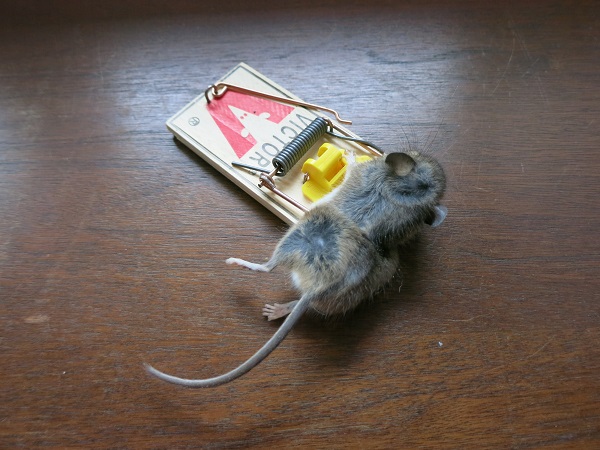Many times the average person cannot tell the difference between rats or mouse. Often a large mouse is mistaken for a
rat and rat activity is mistaken for a mouse infestation. It sometimes takes a lot of research or even consulting a
professional to make sure you have proper I.D. Rather than asking which is easier to trap, ask how to use the proper
trap for the proper animal.
 Here is a list of distinctive traits and differences between the two and how that relates to effective trapping.
• Know the size of your prey –
Here is a list of distinctive traits and differences between the two and how that relates to effective trapping.
• Know the size of your prey – as a rule, Rats are bigger than mice. A house mouse is usually 4-8” long (plus its tail)
and it can weigh up to an ounce. A rat can grow up to 10” long and easily weigh one pound. Weight is an important consideration when talking
about trapping. It is important to know the weight of the animals you wish to catch to assure you use the right sized trap for the job.
• Use the right bait – Even though rodents are opportunistic eaters, they each have favorite foods. For mice, use something
high in carbs like grains or nuts. Rats will prefer something protein based like a chunk of meat or canned pet food.
• Use their habits to your advantage- Mice are very clever. If you set a trap and have no luck catching your mouse in a day or
two, place the trap in a different spot. Rats, on the other hand, are very wary of new things. If your rattrap remains empty for a few days, do
not despair. They just need to get used to it being there, a rat will most likely take the bait once they are comfortable with it being in their
space.
• Breeding patterns – Both Rats and mice are known for their ability to reproduce at a high rate, but rats are far more prolific
their smaller cousins. Mice give birth at the rate of six eight litters each year, with each litter bearing 5-6 young. That means the average mouse
has a 40 about babies each year. On the other hand, Rats can produce seven litters with twice as many young each, so they will produce as many as 84
offspring every year. When you do the math, you can see how you will need a larger number of rattraps to control your infestation.
Everyone’s situation is different, and this information is meant as a simple guide to help you make informed decisions when it comes to rodent control.
There are many types of traps and methods of eradication on the market today. Each has their own drawbacks and benefits. For more information contact
your local wild animal removal service, or your local agricultural service.
Go back to the
How to get rid of mice in the attic home page. You might also want to read about
how to kill mice and why the use
of snap traps is better than
mouse poison. Read an analysis of the different types of traps and how to use them on the
how to trap mice page.
Learn why
bait is not as important as trap type, placement and location. Also read a full analysis of
mouse repellent to understand why it
never works. If you see droppings and want to identify them, read the
mouse poop page. If you need to hire professional help, read about
how much does mouse removal cost?
or you can read this site to learn how to do it yourself. Feel free to email me about Which is easier to trap - mice or rats?